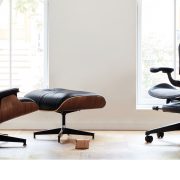WATERCOOLER CHAT: Welcome Home to Resimercial Design
Resimercial office design is a hybrid of residential and commercial design. It has made itself at home around the office, inspiring your team to get cozy with collaboration. The idea behind this trend speaks to redefining comfortable within the commercial environment. It encourages more relaxed engagement through casual office spaces that help employees perform at their best in a less structured environment. This is providing employers, staff, and planners with some amazing opportunities to exceed expectations for your team.






